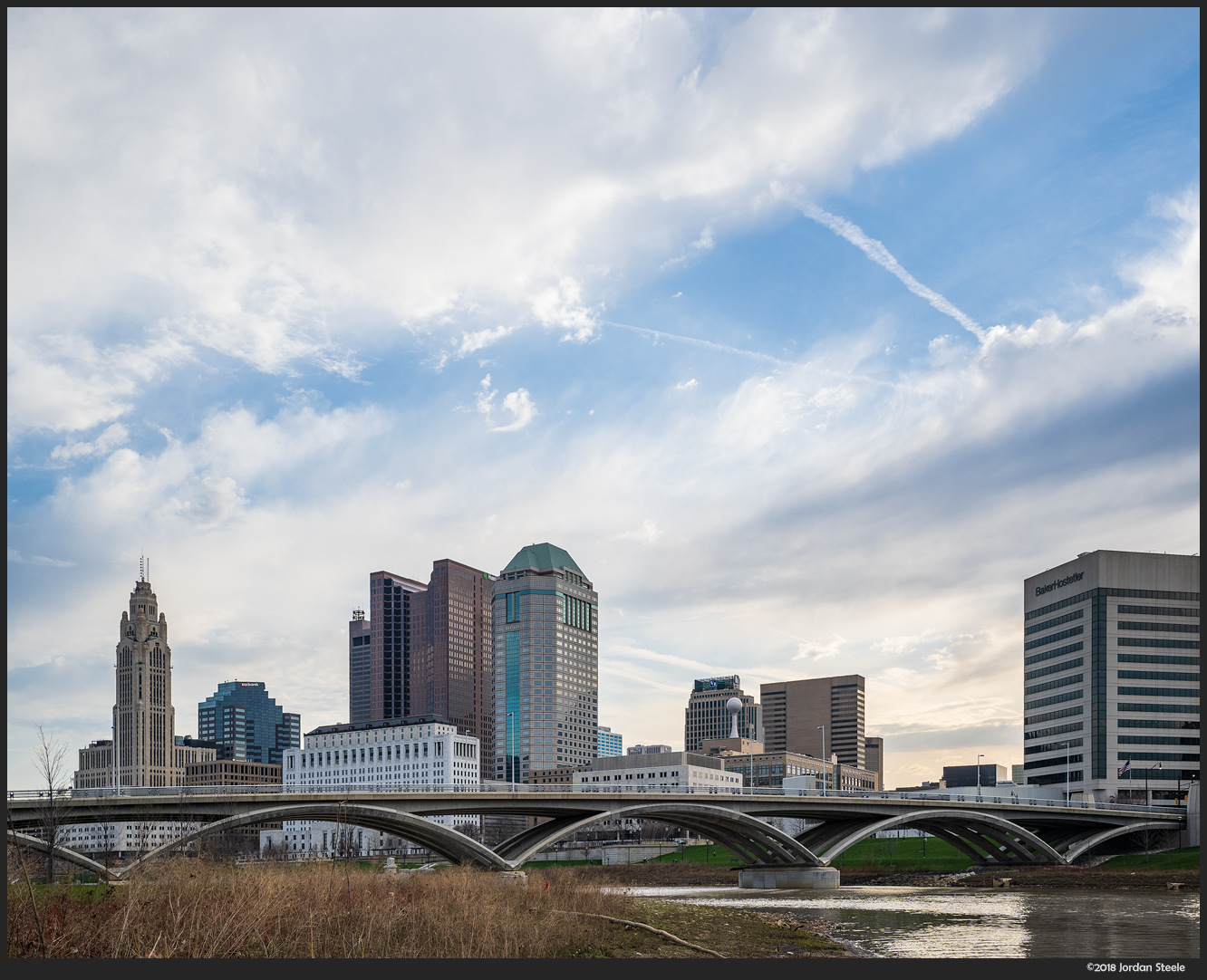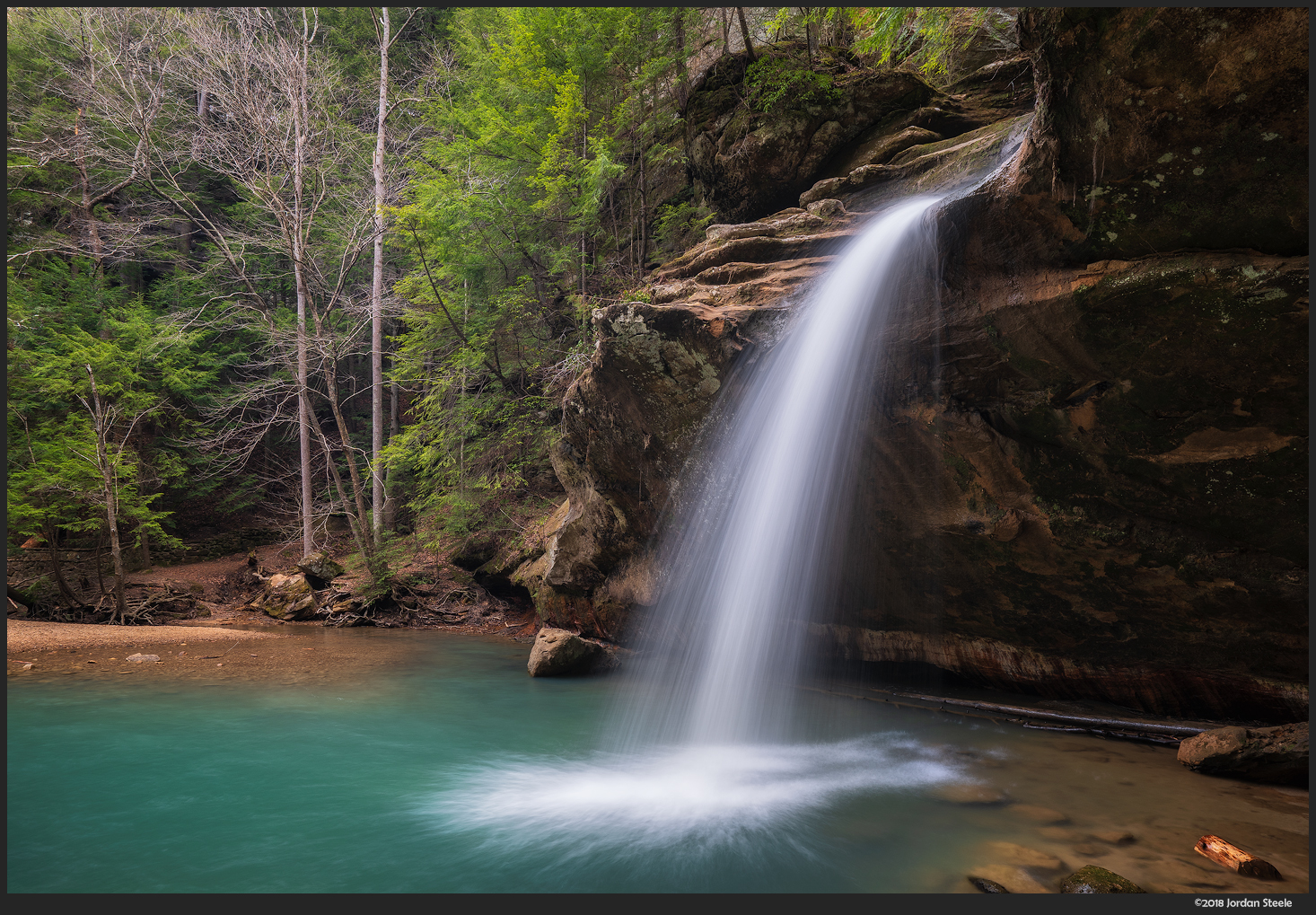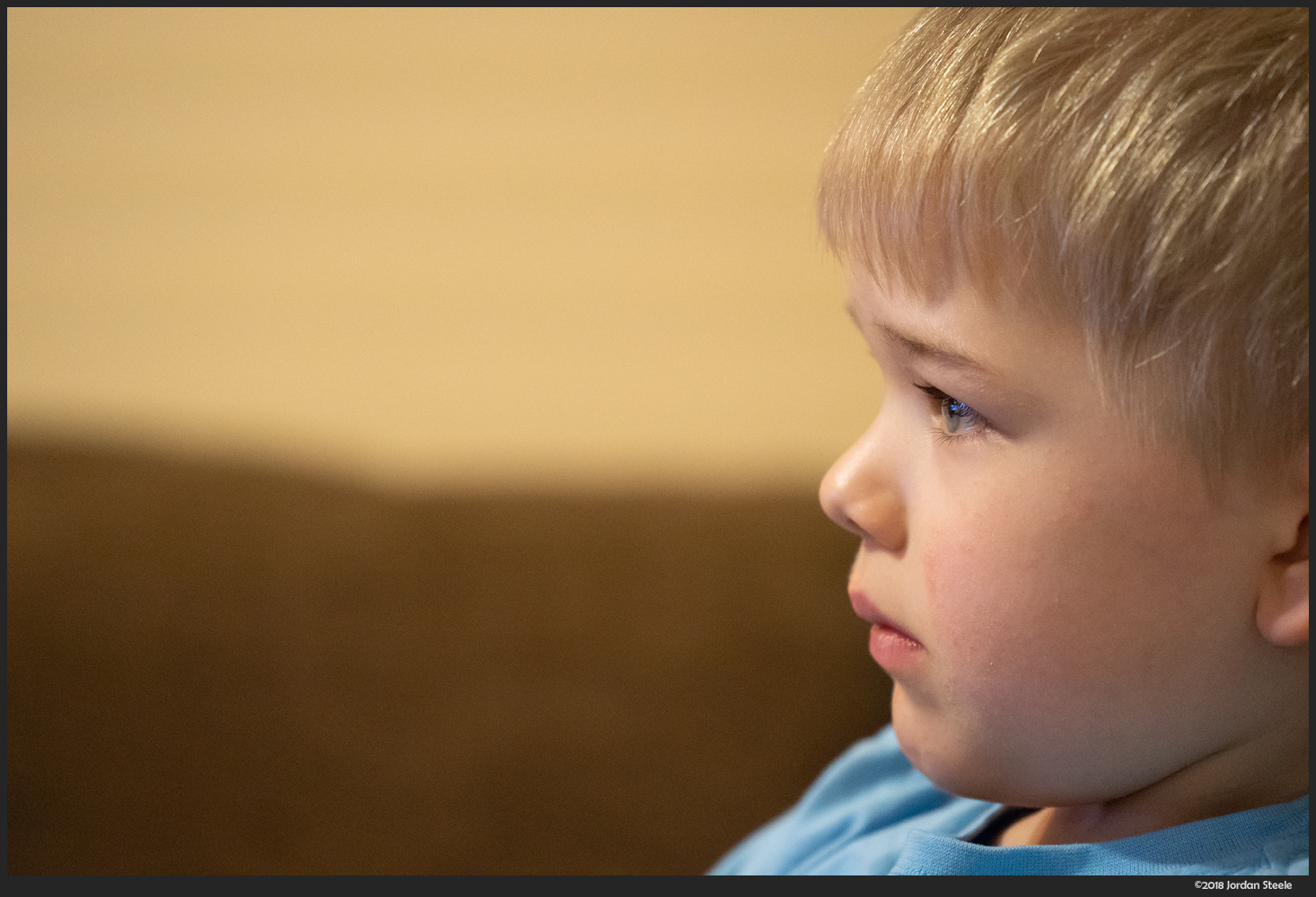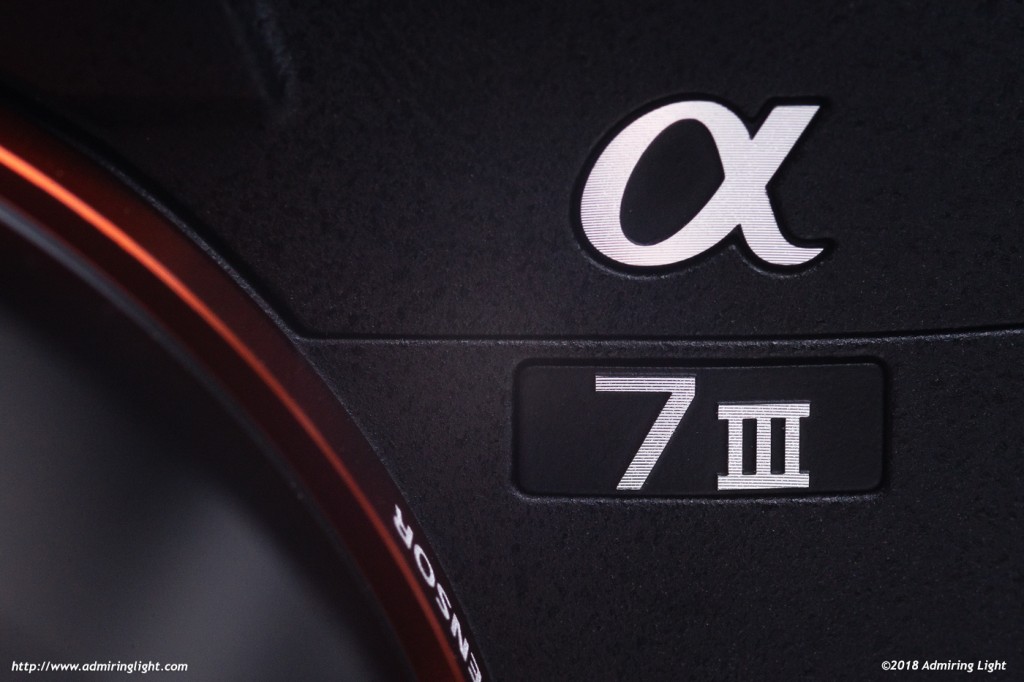Image Quality
The A7 III gains an all new sensor for the first time since the original A7 in 2013. The sensor in the A7 and A7 II was certainly capable, but technology marches onward and sensor quality has fallen behind the times a bit. The A7 III receives an all-new 24 megapixel backside illuminated full-frame sensor that promises better dynamic range and lower noise at higher ISO. The native ISO range on this camera is ISO 100 to 51,200, with expanded ISOs to 50 on the low end and a whopping 204,800 on the high end. So how does this new sensor perform? Very, very well.
Dynamic Range and Color
Formal testing of the A7 III sensor has revealed enormous dynamic range, and in my real-world shooting, that bears out. The camera is capable of capturing an extremely wide range of tones, with bright highlights and deep shadows still holding detail. The bias of the RAW files is for the shadows, which is worth noting, as highlight headroom is about the same as on the A7 II, at around 1-1.5 stops. However, the shadows on the A7 III show the true improvements.

I found I could push low ISO files around 4 to 5 stops in the shadows and still retain outstanding detail and low noise in these areas. Pushing shadows hard on the A7 II still yielded some detail, but noise became overwhelming fairly quickly. The A7 III files, when pushed hard, remain extremely clean, and the result is outstanding flexibility in post. The shot above shows some of this malleability. The city was backlit for this shot, just past dawn, and the light was actually pretty boring – no great morning light due to the way the clouds were positioned, and the original file had the entire bottom of the image in deep shadow, with a light, largely featureless sky due to the wide dynamic range of the scene. The A7 III took the pushing of the shadows and pulling of the highlights with ease. While this shot is nothing to write home about artistically, it showed to me the flexibility of these files.

The color response of the A7 III is a little different than the A7 II, and features some nice improvements. Overall, I found color to be natural and clean. Skin tones are improved from the A7 II, and portraits are very natural looking to my eye. Of great benefit to color processing in RAW are the new profiles from Adobe in the latest Lightroom Classic CC, which provide wonderful curves and color response for portraits, landscapes and everyday shooting of all sorts. There’s great color depth and the overall tonality is beautiful. I have been really pleased with the overall look to the images I’m getting from this camera.
Detail and Noise
The A7 III is still a 24 megapixel sensor, and a such lacks the incredible detail possible with an ultra high resolution sensor like that on the A7R III, but I think that 24 megapixels is really a sweet spot for most photographers. It’s plenty of detail for prints up to 30″, and can be pushed to 40″ or so without too much degradation. While the 42 megapixel sensor in the A7R III provides detail for larger prints and a bit more cropping headroom, for the vast majority of photographers, they’ll be better served by the smaller file sizes and still excellent detail possible with the A7 III.
Aside from the same resolution, however, I have found the A7 III to yield generally sharper and more detailed images than my A7 II. The anti-aliasing filter in the A7 III is rather weak, and also only filters in one direction, so there’s just a touch more detail in the frame on the A7 III, and that extra crispness really is visible when viewing the images at full size.
The bigger improvement, however, is in noise control. The A7 III produces remarkably clean images at higher ISOs, with pure noise response being about a stop better than the A7 II. However, I find the actual improvement in image quality to be even a bit better than that, as detail retention is notably better at higher ISOs, and the A7 III has a remarkable ability to resist color shift as sensor gain is increased. As such, even though ISO 204,800 is effectively unusable due to the sheer amount of noise, even at this utterly absurd ISO, the colors are absent any notable shift (though saturation is quite a bit less).

For the first time ever, I found myself looking at a dark situation and thinking, ‘Oh, it’s only ISO 12,800…that’ll work.” Images are extremely clean to ISO 1600, show some fine grain noise at ISO 3200, and still retain outstanding detail and moderate noise at ISO 6400 and 12,800. Higher ISOs certainly show a fair bit of grain, but I wouldn’t hesitate at all to use up to ISO 51,200 for small prints and web use. ISO 102,400 can be used in a pinch if you absolutely need to get a shot, but it’s not going to be really useful for much more than an ‘I was here’ sort of capture. ISO 204,800 really exists solely so that Sony can say that the camera has it. It’s a sea of noise at this ISO and really isn’t usable for any serious work.
If you want a more detailed noise comparison with the A7 III and A7 II, check out my comparison between the two, featuring 100% crops and an in-depth discussion on the noise handling capabilities of this new camera.
JPEG Image Quality
Long time readers of my site will know that one of the things I found worst about the original A7 was the JPEG engine. That original camera had fairly high compression at lower ISOs and terrible smearing and artifacts at higher ISOs. Sony made big improvements with the Mark II series of cameras, and the A7 III shows even further improvement, such that I now consider the JPEG images out of the A7 III to be quite excellent. At lower ISOs, detail is outstanding, and color and tonal rolloff is very pleasing.

At moderate ISOs like ISO 1600, the JPEG engine does a pretty good job at balancing noise and detail. Even at high ISOs like ISO 12,800 and 25,600, the camera produces pretty good JPEG images, though there is definitely some detail softening at a bit of a blotchy appearance to the noise as the ISOs climb. The above image is a straight out of camera JPEG at ISO 3200. For a full size version click here.
A Note on the ‘Stripe Issue’
If you’ve browsed the web for reviews of the A7 III, it’s possible you’ve read about situations where the A7 III (and the a7R III, and the A9, and the A6000, and the A6500….and the Olympus E-M1, and…..) can produce ‘stripes’ in images in specific situations. I actually noted this in my review of the Ibelux 40mm f/0.85 on my a6000. It’s an artifact that can display in certain circumstances from a reflection off the Phase-Detect AF masks that are used on the on-sensor AF system. DPReview noted the situations, along with several fixes that are available if you should encounter this.
On paper, this sounds like it could be a very serious issue. Well, in my experience so far with the A7 III, after several thousand frames taken, I have encountered the striping issue on exactly zero of my images. I’m not saying it doesn’t exist…I know from my experience with other PDAF sensor cameras that it can appear from time to time, but even using a lens like the 85mm f/1.8 in backlit situations, I was unable to induce it. My conclusion? It’s not something you’re likely to see often. In fact, it’s likely that you will hardly ever see it. If conditions do conspire to induce it in an image of yours, know that the fixes are pretty quick and easy. However, I wouldn’t worry about it. The benefits of on-sensor PDAF massively outweigh the extremely small percentage of shots that are likely to suffer any visual artifacts.
Video
As I mentioned at the start of the review, I am not much of a videographer. I certainly don’t do any professional work for video, and my experience in video shooting and production is significantly more limited than on the stills side. As such, please take any comments that I make in this section with a grain of salt, and look to some other reviews for a more in-depth look at the video quality of this camera.
I will, however, give you my thoughts on the video modes that I have had a chance to use. The A7 III is the sixth Sony full-frame camera to feature 4K video recording, and does so at 30, 24 or 25 frames per second at a 100Mbps data rate. It can also shoot 1080p and 1080i HD at framerates between 24 and 120 frames per second. Unlike some previous iterations, the A7 III’s oversampled 4K footage in full frame is of very high quality, while some earlier Sony cameras suffered a bit in full-frame mode, and had better video in the cropped Super 35 mode.
In the few video clips I’ve taken, I was very impressed with the image quality. The dynamic range and noise control in videos is outstanding, providing very pleasing tonal qualities with very low noise, even in dim indoor environments. Videos produce excellent detail. There is SLog recording available as well for those videographers who grade their footage in post, while most casual shooters will stick to the built in profiles.
The A7 III has HDMI out, headphone out and microphone inputs, allowing for a competent video rig to be assembled. For my uses, the video capabilities on the A7 III far exceed my standards, but as I’ve said, take a longer look at a few other reviews, such as Gordon Laing’s excellent review at CameraLabs and DPReview’s video review with Chris Niccolls and Jordan Drake for a more in-depth look at the video capabilities of the camera.







Leave a Reply